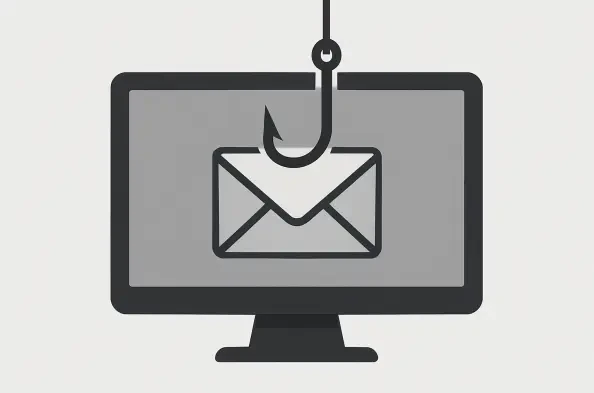In an era where cyber threats evolve at a relentless pace, a new and insidious method of attack has emerged, catching even seasoned security experts off guard, as hackers have begun exploiting Scalable Vector Graphics (SVG) files to deliver malware with alarming stealth. These lightweight, XML-based image formats, known for rendering at any resolution, often bypass conventional antivirus systems due to their seemingly benign nature. A recent report by a prominent scanning platform revealed a sophisticated phishing campaign leveraging SVGs, underscoring how cybercriminals are adapting to exploit less scrutinized file types. This development raises urgent questions about the adequacy of current security measures and the need for heightened vigilance among users and organizations alike. As SVG files become an unexpected vector for attacks, understanding the mechanics of these threats and the industry’s response becomes critical to safeguarding digital environments.
Unveiling the SVG Phishing Threat
A particularly alarming example of SVG exploitation surfaced through a phishing campaign that masqueraded as an official legal notification from a judicial system. When unsuspecting users opened the SVG file, it rendered a deceptive in-browser portal complete with a fake progress bar and a download button. This cunning design tricked individuals into downloading a malicious ZIP archive, which contained a signed executable and a harmful .dll file. Once executed, these components unleashed additional malware onto the victim’s system, compromising security with devastating efficiency. The attack capitalized on a lesser-known capability of SVGs to embed HTML and JavaScript, effectively transforming them into miniature phishing kits. Analysis revealed hundreds of related SVG files, many of which evaded detection by antivirus engines at the time of discovery, largely due to obfuscation tactics and the insertion of irrelevant code to mislead static scans.
The sophistication of these SVG-based attacks lies in their ability to blend seamlessly into everyday digital interactions, often arriving via email or embedded in seemingly harmless websites. Security researchers have noted that hackers exploit the trust users place in image files, which are rarely associated with malicious intent. This campaign’s success highlights a critical gap in traditional detection methods, as many systems fail to scrutinize SVGs with the same rigor applied to executable files or scripts. Beyond the immediate damage of malware installation, such attacks erode confidence in digital communications, making it harder for users to distinguish legitimate content from traps. The scale of undetected files in this instance serves as a stark reminder of how rapidly cybercriminals adapt, pushing the boundaries of deception to exploit overlooked vulnerabilities in file formats that were once considered safe for universal use.
Rising Trends in SVG-Based Attacks
Beyond isolated incidents, the misuse of SVG files reflects a broader trend in cybercrime, where attackers increasingly target less obvious vectors to bypass security filters. Reports from industry leaders have documented similar phishing efforts aimed at banks and insurance companies, using SVGs as redirectors or credential harvesters to steal sensitive information. This uptick in activity signals a shift in hacker strategies, focusing on file types that evade the scrutiny typically reserved for more notorious formats like PDFs or executables. Cloud security teams have observed a significant rise in such tactics, noting that SVGs can act as discreet conduits for malicious payloads. As these files often render directly in browsers or email clients, they provide an ideal mechanism for executing code without raising immediate suspicion, amplifying their threat potential in corporate and personal settings.
The growing prevalence of SVG-based attacks has not gone unnoticed by the cybersecurity community, prompting urgent calls for updated defenses. Security vendors have begun revising detection rules to better identify malicious SVG payloads that slip past initial filters, while software giants have taken proactive steps to curb risks. For instance, certain email platforms now disable inline SVG rendering, replacing such content with blank spaces to prevent embedded malicious scripts from executing. These measures, though promising, underscore the reactive nature of current responses, as attackers continue to innovate at a faster pace. The challenge lies in balancing user functionality with security, as SVGs remain a valuable tool for legitimate design and web development. Educating users to treat unknown SVG files with caution, akin to suspicious attachments, emerges as a critical step in mitigating this evolving threat landscape.
Strengthening Defenses Against Emerging Risks
As the threat of SVG exploitation gained attention, industry responses crystallized into a multi-pronged effort to close off these attack vectors. Software providers implemented policy changes to limit the risks posed by inline rendering in email clients, effectively neutralizing one of the primary delivery methods for malicious SVGs. Meanwhile, antivirus developers refined their algorithms to detect obfuscated code within these files, addressing the gap that allowed many early attacks to go unnoticed. These technical advancements marked a significant step forward, though they also highlighted the persistent cat-and-mouse dynamic between hackers and defenders. The adaptability of cybercriminals in leveraging SVG features for phishing and malware delivery remained a pressing concern, driving home the need for continuous innovation in security protocols to stay ahead of emerging tactics.
Looking back, the collective push to counter SVG-based threats reflected a broader recognition of the need for proactive vigilance in cybersecurity. Beyond technical fixes, the emphasis shifted toward user awareness, encouraging individuals to scrutinize unexpected files regardless of their format. Security experts advocated for ongoing training to recognize phishing attempts disguised as legitimate communications, a strategy that proved vital in reducing successful attacks. As the industry adapted, the focus turned to future considerations, such as developing more robust file validation tools and fostering collaboration across sectors to share threat intelligence. These efforts aimed to build a resilient digital ecosystem, ensuring that the ingenuity of attackers exploiting formats like SVGs was met with equally determined and forward-thinking defenses.






